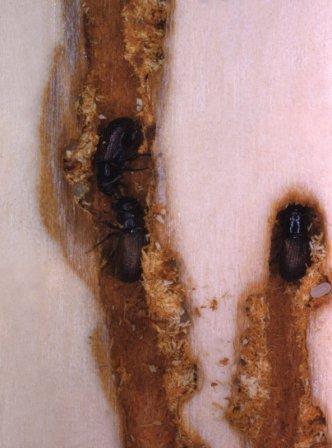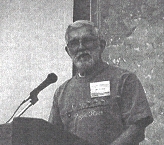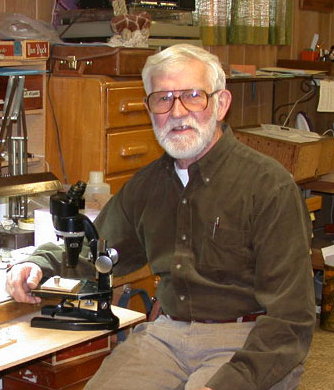Worksheet 3: Biography Malcolm M. Furniss
Malcolm “Mal” Furniss was born in Branchville , New Jersey on June 17, 1926. He grew up in Waverly, New York where he explored the nearby woodlots and streams and developed a life-long attraction to nature and the outdoors. In January 1945, Furniss entered the Army Air Corps at Beale Air Force Base, California . He was stationed throughout the U.S. and was discharged in November of 1945 after the end of World War II. In January 1946, Furniss enrolled in forestry with a minor in entomology at the University of California, Berkeley . He received his bachelor's degree in 1950.
In June of 1950 Furniss was hired at the Berkeley Forest Insect Lab, Bureau of Entomology & Plant Quarantine, USDA, to survey bark beetle-killed trees in the Sierra Nevada Mountains. In 1953, the Bureau of Entomology & Plant Quarantine was closed and Furniss was transferred to the USDA Forest Service, California Forest and Range Experiment Station. Then in October 1954 he moved with his wife, Irene, and two children to Ogden, Utah, where he worked at the Intermountain Forest & Range Experiment Station as an Entomologist. An entomologist is a scientist who studies insects. In May 1955, he was transferred to Boise, Idaho. The Idaho forests were experiencing widespread damage from leaf-eating insects such as the spruce budworm. While at Boise, Malcolm studied the Douglas-fir beetle and insects infesting bitterbrush, an important browse plant for deer during winter.
 Image 1: Douglas-fir beetles laying eggs in inner |
 Image 2: Western coniferous forest infested by the mountain pine beetle. The brown trees have been infested and destroyed. Photo by W.C. Guy, USDA Forest Service. |
In 1963, Furniss transferred to the Forestry Sciences Lab in Moscow, Idaho and began attending graduate school part-time at the University of Idaho. He graduated in May 1966 with a master's degree in Entomology. He continued to conduct numerous studies on the Douglas-fir beetle, as well as other bark-beetles. Bark beetles are a natural part of forests. Some “primary” species of bark beetles can be very destructive to coniferous (pine, spruce, fir) forests and kill trees; most, however, are “secondary,” meaning that they infest only dead or dying trees, thereby helping the forest ecosystem. The “primary” species have evolved a relationship with Blue Stain fungi that helps them infest coniferous trees. These bark-beetles carry fungus spores into the trees on various parts of their bodies. The fungi then infect the phloem (inner bark) and xylem (sapwood), obstructing the movement of fluids, and disrupting the tree's defenses against the invading beetles. Eventually the tree may die due to lack of moisture; however, not all attacked trees will die.
In 1969 Malcolm Furniss became Project Leader of the research work unit, Insects of Forest Trees and Wild-land Shrubs of the Northern Rocky Mountains. From 1970-1982, he tested various bark beetle pheromones ( chemicals secreted by an insect, that influence the behavior or development of others of the same species) and in 1971 discovered that the odor of Douglas-fir beetle pheromone MCH (methylcyclohexenone) was an anti-attractant to the beetle. This discovery led to a 10-year research and development project that resulted in new technology to help prevent Douglas-fir beetle infestations. This project developed a formula containing MCH that could be applied by helicopter to susceptible trees such as those damaged by storms. Application of this formulation to such weakened trees can prevent Douglas-fir beetles from increasing in number and subsequently infesting healthy live standing trees.
In April 1982, Furniss retired from the USDA Forest Service. He then became affiliated with the Department of Entomology at the University of Idaho. From 1982 to the present, he has continued to study forest insects in western North America and Europe. Furniss was the winner of the Western Forest Insect Work Conference Founders Award in 1998. The Founders Award is given to an individual who has made an outstanding contribution to western forest entomology. Furniss has authored or coauthored 115 publications, and has published a field guide to Idaho bark beetles. He is widely recognized for his expertise in bark-beetle identification.
 Image 3: Malcolm M. Furniss giving his |
 Image 4: Furniss in his home laboratory in |

